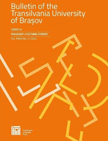Sectarian language and perception of the “Other” after the Arab Spring
Sectarian language and perception of the “Other” after the Arab Spring
Author(s): Reima Al-JarfSubject(s): Language studies, Applied Linguistics, Political history, Politics and society, Studies in violence and power, Present Times (2010 - today), Inter-Ethnic Relations, Ethnic Minorities Studies, ICT Information and Communications Technologies, Politics and Identity, Identity of Collectives
Published by: Editura Universitatii Transilvania din Brasov
Keywords: sectarian language; Arab spring; political discourse; view of the other; components of perception; social amplification; risk attenuation;
Summary/Abstract: This study explores how sectarian language prevalent on Arabic media shapes common Arab people's perceptions of sects such as Sunni, Shiites, and others. A sample of Arabic sectarian expressions was collected from social media, print media and TV channels. A sample of students and faculty was surveyed. Sectarian language was analysed according to the components of perception (perceiver, target, and situation), the factors that affect each, and the social amplification and attenuation risk framework. Sectarian language used by students, faculty and Arab media is characterized by contempt, hostility, hatred, and intolerance of the sect(s) they disapprove of as they constitute political and ideological threats. Many Sunnis are afraid of the Shiite tide and Shiite Crescent. Hezbollah, Houthis, and Muslim Brothers are considered “terrorists” and “militias”.
Journal: Bulletin of the Transilvania University of Braşov, Series IV: Philology & Cultural Studies
- Issue Year: 15/2022
- Issue No: 2
- Page Range: 29-46
- Page Count: 18
- Language: English

